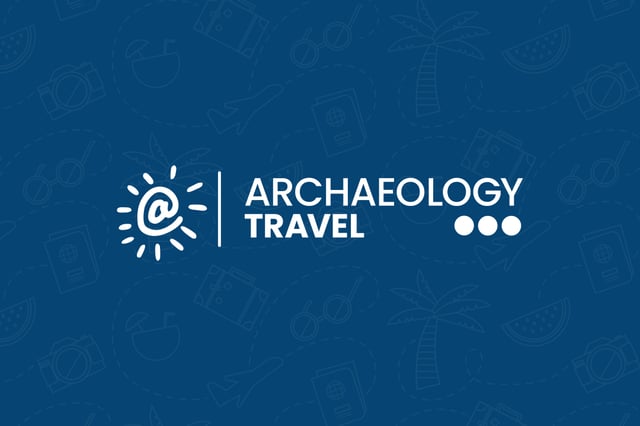South Valleys of Wales
Art, History & Archaeology Sites & Museums
Archaeology & History Sites in South Valleys
Blackfriars' Friary, Bute Park
The Dominican order of friars only established two friaries in Wales, one of which was in the grounds of what today is Bute Park in Cardiff. Following the dissolution of the monasteries in the 1530s, the friary was dissolved and its buildings demolished. Archaeologists excavated the site in the 1880s and 1890s. The Marquess of Bute, who was then the landowner, subsequently set out a Victorian ornamental garden atop the medieval foundations, allowing modern day visitors to appreciate the layout of the original friary.

Caerleon Amphitheatre
The modern town of Caerleon is built on the remains of a Roman legionary fortress and settlement that was known by the Latin name of Isca Silurum. Located on the edge of today’s town is the amphitheatre, a well preserved example built around 90 AD. Containing 8 entrances, it would have seated about 6,000 spectators eager to watch blood sports and gladiatorial combat. The 12th-century writer Geoffrey of Monmouth alleged that the amphitheatre, because of its shape, was King Arthur’s Round Table. Archaeologists excavated the amphitheatre in 1926.

Caerleon Roman Fortress and Baths
Known at the time as Isca, the town of Caerleon was one of the major hubs for the Roman Army in Britain. Evidence for this can be found at the Caerleon Roman Fortress and Baths, a heritage attraction managed by Cadw. Isca was one of just three permanent legionary fortresses in Roman Britain, and today boasts the only Roman barracks on public display anywhere in Europe. Also on show is the open-air swimming pool, or natatio, in which soldiers would have cleaned themselves, relaxed, and socialised.

Cardiff Castle
Located in the centre of the city, Cardiff Castle is a medieval fortress later transformed into a lavish Victorian fantasy of the Middle Ages. A Roman fort originally stood here before Norman invaders adopted the location for their castle, from which they sought to dominate the Lordship of Glamorgan. The castle repeatedly saw bloodshed amid medieval clashes between Welsh and English and later between Parliamentarians and Royalists. In the 19th century, the architect William Burges oversaw substantial renovations in the Neo-Gothic style.

Ewenny Priory
It was the Anglo-Norman noble Maurice de Londres who established Ewenny Priory in 1141, forming it as an offshoot of the established Benedictine Abbey of Saint Peter in Gloucester, England. The resulting structure remains one of the finest surviving examples of Romanesque architecture in South Wales, with an unusually heavily fortified exterior. Following King Henry VIII’s dissolution of the monasteries in the 1530s, the medieval priory remained active as a parish church for the local community, a function it still plays today.

Hut 9 Island Farm POW Camp
Hut 9 is only surviving building of the Island Farm POW Camp of WWII. The camp was built to house workers at the nearby ammunitions factory, but then used for American soldiers preparing for D-Day. In November 1944 1,600 German prisoners arrived. On the night of 10 March 1945 70 German prisoners tunnelled their way out; the biggest escape attempt by German POWs in Great Britain.

Margam Abbey
While the existence of the decorated Margam Stones suggest an earlier monastery on the site, Margam Abbey’s surviving ruins date to a Cistercian monastery from 1147. Built on land donated by Robert, Earl of Gloucester, the abbey became the largest and wealthiest monastery in 12th-century Wales. Following the dissolution of the monasteries, the church nave was transformed into a parish church, still in use to this day. Victorian alterations include the addition of stained-glass windows designed by William Morris.

Neath Abbey and Gatehouse
One of the best surviving medieval monasteries in Wales, Neath Abbey began life in 1130. It was the Norman knight Sir Richard de Granville who established the abbey as a home for Savigniac monks from Normandy. The Savigniacs were absorbed into the Cistercian Order in the 12th century, while Neath Abbey’s wealth grew to the extent that it became one of Wales’ richest monasteries by the late 13th century. Amid the Industrial Revolution of the 18th century, the abbey became a copper smelting plant.

Ogmore Castle
Standing alongside the River Ewenny, the ruined Ogmore Castle was erected by William de Londres, a Norman mercenary, in the early 12th century. Probably designed to defend Glamorgan from the threat of indigenous Welsh attacks, it was initially a timber and earth motte-and-bailey structure; some of the earthworks from this phase probably survive. As the medieval period proceeded, a more defensible stone fortification was built. The keep is the castle’s tallest surviving structure, and one of the oldest buildings in South Wales.

St Lythans Burial Chamber
In its current state, the Saint Lythans Burial Chamber represents a stone dolmen standing alone in a field, but when it was built this dolmen would have been covered by a large cairn of rocks, possibly with layers of soil and turf atop that. This mound or tumulus was probably a burial site created by its Neolithic builders to house their dead. Much folklore has built up around the dolmen and it is possible that its name stems from the medieval Welsh tale of Culhwch and Olwen.

Museums & Art Galleries in South Valleys
Big Pit National Coal Museum
Part of the larger Amgueddfa Cymru – National Museum Wales, the Big Pit National Coal Museum is based around a coal mine that operated from 1880 to 1980. The museum showcases the life and experiences of miners in South Wales, and the important role that they played in Britain’s Industrial Revolution. As well as exploring a number of above-ground exhibitions, today’s visitors can join tours into the mine itself. The museum constitutes part of the Blaenavon Industrial Landscape, a UNESCO World Heritage Site since 2000.

Blaenavon World Heritage Centre
Since 2000, UNESCO have recognised the Blaenavon Industrial Landscape as a World Heritage Site for the important role it played in Britain’s Industrial Revolution. Visitors can learn more about the history of this landscape at the Blaenavon World Heritage Centre, a small museum occupying part of the old Saint Peter’s School; the town’s library occupies the upper floor. Various displays and videos help tell the story of the iron and coal mining industries that dominated this area during the 19th century.

National Museum Cardiff
The National Museum Cardiff introduces visitors to
Welsh history, from the natural, geological and palaeontological past through to the county’s complex human heritage. Its archaeological and historical collections include nearly 1 million objects, from Palaeolithic artefacts through to the objects produced in the Industrial Revolution; one highlight is the Iron Age hoard from Llyn Cerrig Bach. The museum also has a significant collection of fine art, a rotating schedule of temporary exhibitions, and regular events for children and families.

National Roman Legion Museum
Located in the Roman city of Caerleon, the National Roman Legion Museum explores the world of the Roman Army, with particular focus on the everyday lives of soldiers stationed in Britain. The museum’s collection includes over half a million objects, primarily those excavated from the Roman forts at Caerleon and Usk. As well as part of a reconstructed Roman barracks, the museum boasts a garden containing plants that would have been familiar to people living in Roman Britain. A range of special events take place throughout the year.

Newport Museum and Art Gallery
Founded in 1888, the Newport Museum and Art Gallery displays a range of artefacts pertaining to the heritage of Newport and its surrounding area. With over 60,000 objects in its collection, it tells the story of this region from the Palaeolithic through to recent centuries. Much of its material derives from the Romano-British period, when there was a substantial Roman military presence in this part of Wales. The museum also boasts a nationally important collection of material pertaining to the Chartists, a militant workers’ movement of the 1830s and 1840s.













